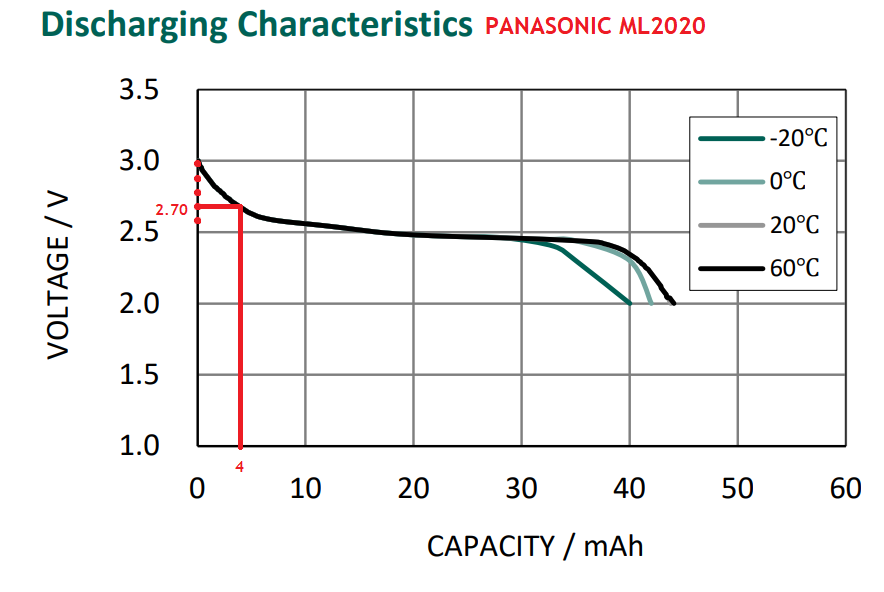The fully assembled watch you see is actually using a rechargeable Panasonic ML2020 battery, which is about 40mAh.
As of today, the voltage is at exactly 2.70V, which corresponds to 10% of the capacity based on the published material spec from Panasonic.

Based on the experimentally estimated 1mAh/day draw of the un-optimized hardware and code, we are currently looking at about 1000 days on a 1Ah battery, or about a little less than 3 years, give or take. The watch is not optimized for the rechargeable ML2020 battery, which performs best under a different use case, therefore I estimate a little over 1000 hours even on an un-optimized design.
Regardless, we are currently at 3 years on a charge, so that's a massive win for my original postulate that a 10-year battery watch life is wholesale possible.
On a side note I also proved that the watch would run on ML2020 which is extremely important use case one we add a solar cell, where we will need to use a rechargeable battery.
To put this in perspective, the longest life on a single battery charge smartwatch is about a month, so we are way ahead. Of course we are also talking a pretty thin functionality so that comparison is probably (most definitely) unfair, however, it points out that with some effort we can hit the 10 year mark on a certain set of smartwatch functionality that strikes a good balance between battery life and creature features.
Cheers!
 VALENTINE
VALENTINE
Discussions
Become a Hackaday.io Member
Create an account to leave a comment. Already have an account? Log In.